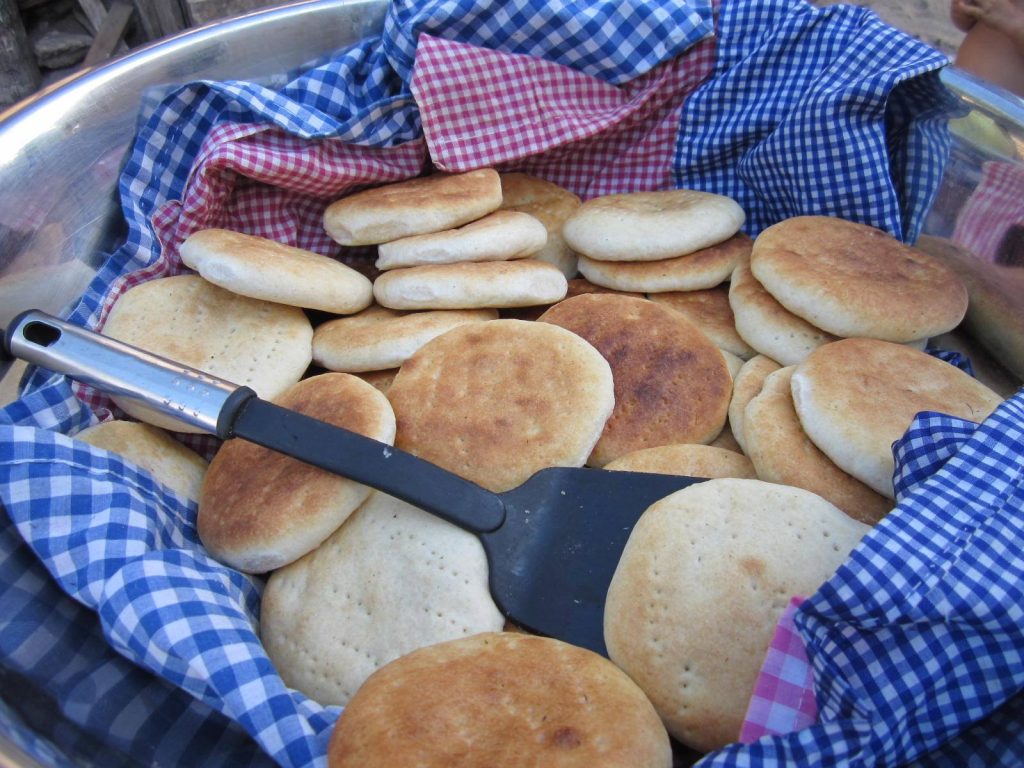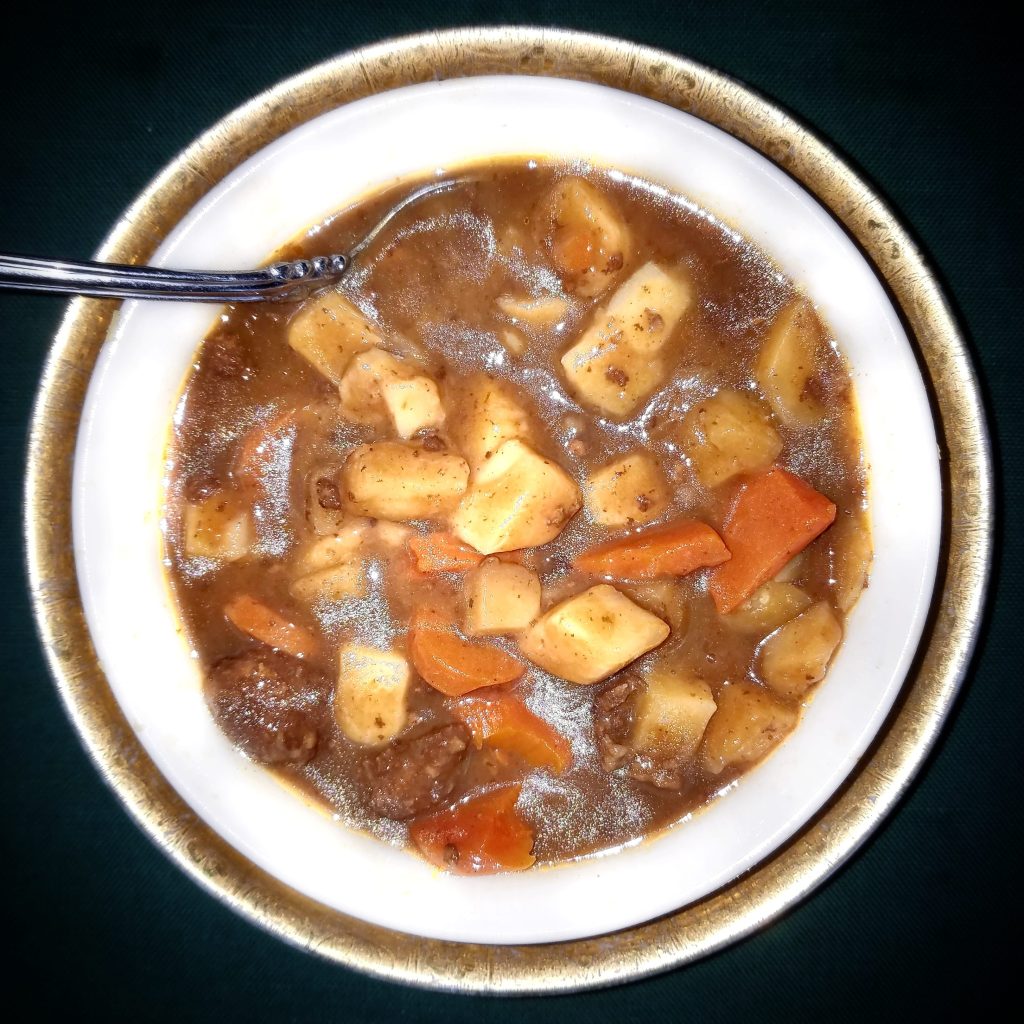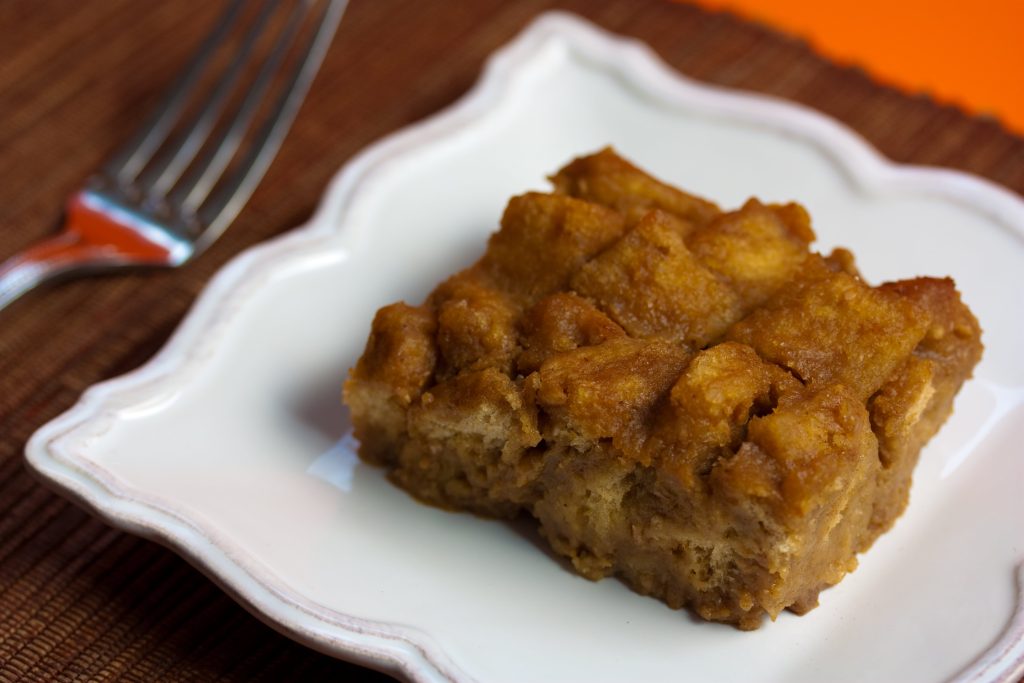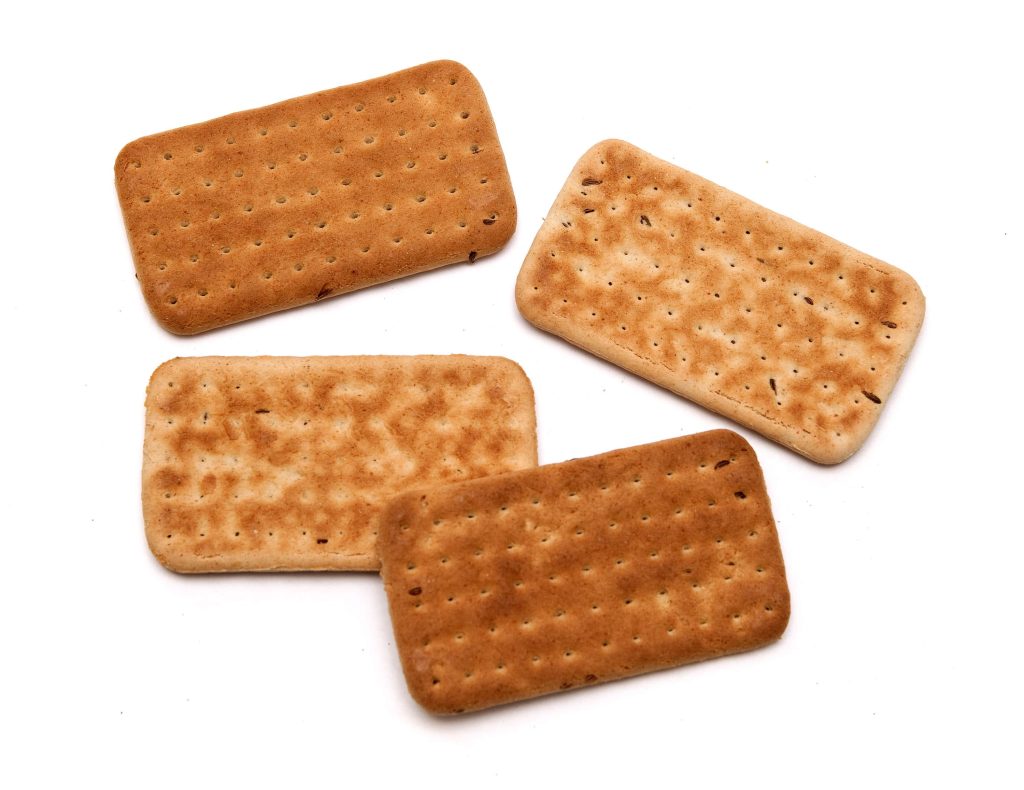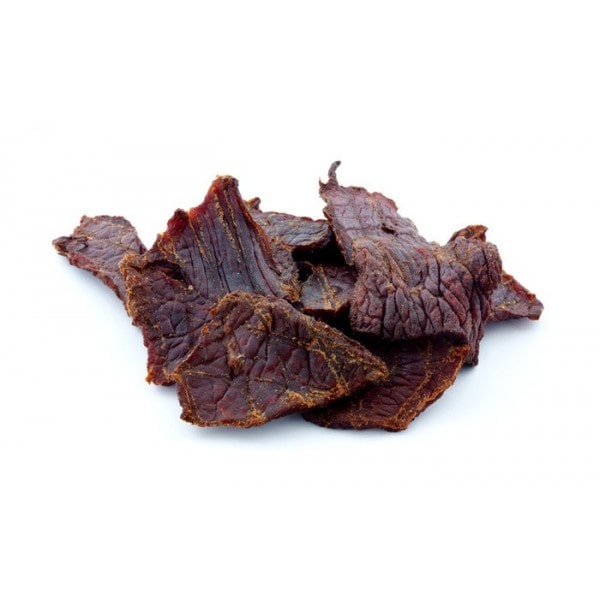Contents
Contents
Wondering what people ate in colonial times?
In this article, we’ve provided nine different American Revolution recipes you can make at home, so you can find out what food was like during the Revolutionary War.
We’ve included breakfast items, snacks soldiers might have eaten, lunch/dinner options, and desserts as well.
These recipes allow you to take modern shortcuts (such as using blenders and other tools) to make meals faster. However, you can also make these recipes using more traditional means if you’d prefer.
To learn more about how the Continental Army was fed, read this chapter of The Private Soldier Under Washington by Charles Knowles Bolton.
Breakfast
1. Cornmeal Mush
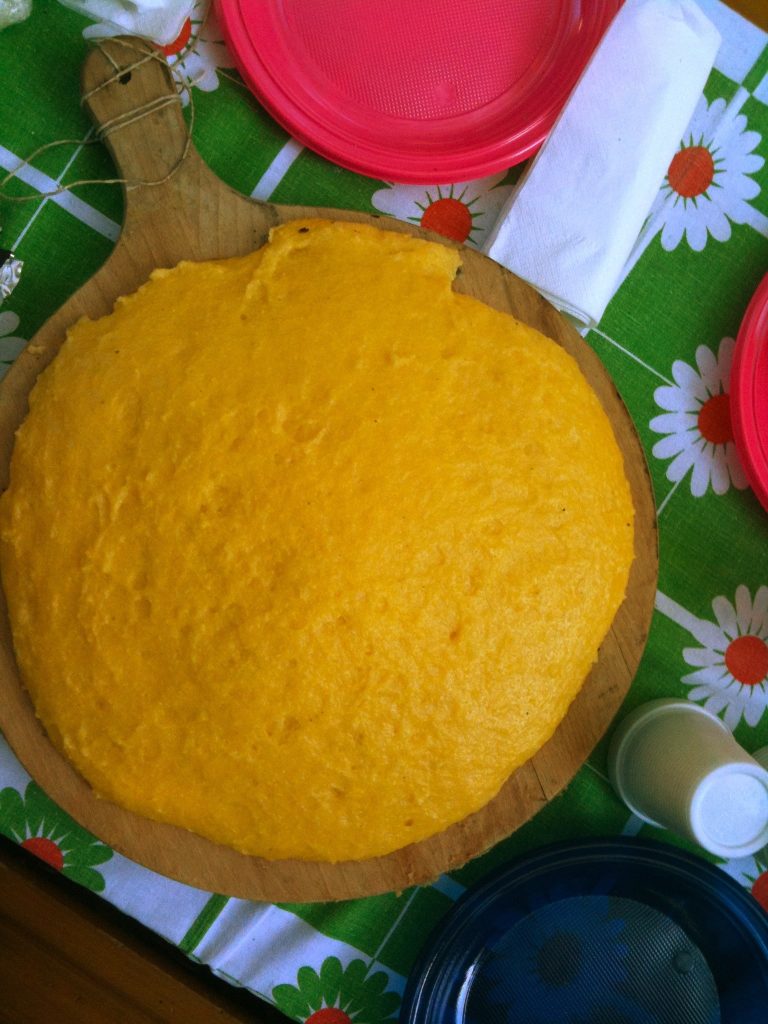
Ingredients
- 1 cup yellow cornmeal
- 4 cups water
- 1 tsp salt
- Butter, honey, or syrup for serving
Instructions
- In a medium bowl, mix the cornmeal with 1 cup of water to make a smooth paste.
- Bring the remaining 3 cups of water to a boil in a heavy-bottomed saucepan. Add the salt.
- Gradually whisk the cornmeal paste into the boiling water to avoid lumps.
- Reduce the heat to low and simmer, stirring frequently, until the mixture thickens and the cornmeal is cooked through, about 15 to 20 minutes.
- Serve hot in bowls. Top with butter, honey, or syrup according to preference.
2. Colonial Johnny Cakes (also known as Journey Cakes)
Ingredients
- 2 cups cornmeal
- 1 teaspoon salt
- 1 tablespoon sugar (optional, for a slightly sweeter cake)
- 1 1/2 cups boiling water (may need more to achieve desired consistency)
- Butter, for frying and serving
- Honey or molasses, for serving
Instructions
- In a mixing bowl, combine the cornmeal, salt, and sugar (if using).
- Gradually add the boiling water to the dry ingredients, stirring constantly. The mixture should be thick but moist enough to shape into patties. If it’s too dry, add a little more boiling water until the right consistency is achieved.
- Let the mixture sit for a few minutes to hydrate the cornmeal, making it easier to handle.
- Heat a skillet or griddle over medium heat and add a generous amount of butter.
- Form the cornmeal mixture into small cakes, about 3 inches in diameter, and flatten them to about 1/2 inch thick.
- Fry the cakes in the hot skillet, turning once, until they are golden brown and crispy on both sides, about 4-5 minutes per side.
- Serve hot, topped with a dollop of butter and drizzled with honey or molasses.
Lunch or dinner
3. Colonial Beef Stew
Ingredients
- 2 lbs beef stew meat, trimmed and cut into 1-inch cubes
- 3 tbsp all-purpose flour
- Salt and freshly ground black pepper, to taste
- 4 tbsp vegetable oil
- 3 cups beef broth
- 2 medium onions, coarsely chopped
- 3 carrots, peeled and sliced 1/4 inch thick
- 3 large potatoes, peeled and cut into 1-inch cubes
- 1 tsp dried thyme
Instructions
- Pat the beef dry with paper towels. Season generously with salt, pepper, and flour.
- Heat 2 tbsp oil in a large pot over medium-high heat. Brown the beef in batches to avoid crowding, adding more oil as needed. Transfer browned beef to a plate.
- In the same pot, add the onions and a bit more oil if the pot is dry. Sauté until they begin to soften, about 5 minutes.
- Return the beef to the pot. Add the beef broth, ensuring it covers the beef and vegetables. Bring to a boil.
- Reduce heat to low, cover, and simmer for about 1 hour. Add the carrots, potatoes, and thyme. Continue to simmer covered until the vegetables and beef are tender, about 30 minutes to 1 hour.
- Adjust seasoning with salt and pepper. Serve hot.
4. Salt Pork with Peas and Potatoes
Ingredients
- 2 lbs salt pork, rinsed and cut into chunks
- 4 cups water (or enough to cover the pork in the pot)
- 2 cups dried peas, soaked overnight and drained
- 4 large potatoes, peeled and quartered
- 1 large onion, chopped
- Salt and pepper to taste (if needed, depending on the saltiness of the pork)
Instructions
- Place the salt pork in a large pot and add water until the pork is just covered. Bring to a boil, then reduce heat and simmer for about 1 hour to tenderize and desalinate the pork slightly.
- Add the soaked and drained peas, potatoes, and onion to the pot. Return to a boil, then reduce heat and simmer until the vegetables are tender and the peas have broken down slightly, about 45 minutes to 1 hour.
- Taste and adjust seasoning with salt and pepper, though be cautious with additional salt due to the inherent saltiness of the pork.
- Serve hot, ensuring each plate gets a mix of pork, peas, and potatoes, with some of the broth.
5. Pease Porridge
Ingredients
- 2 cups dried yellow split peas
- 6 cups water
- 1 large onion, finely diced
- 1 tsp salt, or to taste
- 2 tbsp unsalted butter
- Freshly ground black pepper, to taste
Instructions
- Rinse the split peas thoroughly under cold running water. Check and remove any dirt or debris.
- Place peas in a large bowl, cover with cold water, and soak overnight. Drain and rinse.
- In a large pot, combine the soaked peas, 6 cups of fresh water, diced onion, and salt. Bring to a boil over high heat, then reduce the heat to low.
- Simmer covered, stirring occasionally, until the peas are completely soft and start to fall apart, about 1 hour.
- Use a potato masher or immersion blender to mash the peas to a thick, semi-smooth texture. Adjust the consistency by adding more water if too thick.
- Stir in the butter until melted and season with salt and freshly ground black pepper to taste. Serve hot as a side or main dish.
Desserts
6. Apple Tansey
Ingredients
- 4 large tart apples, peeled, cored, and sliced
- 4 tbsp unsalted butter
- 4 large eggs
- 1/4 cup granulated sugar
- 1/4 tsp ground nutmeg
Instructions
- Preheat your broiler. Melt butter in a large, oven-safe skillet over medium heat. Add apple slices and cook, stirring occasionally, until they are golden and softened, about 10 minutes.
- In a bowl, whisk together eggs, sugar, and nutmeg until well combined.
- Pour the egg mixture over the cooked apples in the skillet, gently tilting the skillet to distribute the eggs evenly.
- Cook without stirring until the edges begin to set, about 2 minutes. Then place the skillet under the broiler.
- Broil until the top is set and golden brown, about 3-5 minutes. Watch carefully to prevent burning.
- Carefully remove from the broiler. Slice into wedges and serve warm.
7. Pumpkin Pudding
Ingredients
- 2 cups pureed pumpkin (fresh or canned)
- 1 1/2 cups whole milk
- 2 large eggs, lightly beaten
- 3/4 cup granulated sugar
- 1 tsp ground cinnamon
- 1/2 tsp ground ginger
- 1/4 tsp ground cloves
- 1/2 tsp salt
- 1 unbaked pie shell (9-inch)
Instructions
- Preheat oven to 350°F (175°C).
- In a large bowl, combine pumpkin puree, milk, eggs, sugar, cinnamon, ginger, cloves, and salt. Whisk until well blended.
- Pour the pumpkin mixture into the unbaked pie shell, smoothing the top with a spatula.
- Bake in the preheated oven until the filling is set and a knife inserted near the center comes out clean, about 45 to 50 minutes.
- Let the pudding cool on a wire rack for at least 2 hours before serving to allow the filling to firm up.
Soldiers’ snacks
8. Hardtack (Ship’s Biscuit)
Ingredients
- 4 cups white flour
- 2 cups water
- 1 tablespoon salt
Instructions
- Preheat your oven to 375°F (190°C).
- In a large mixing bowl, combine the flour and salt. Gradually add water and stir until a stiff dough forms. The dough should be firm and not sticky; adjust with a bit more flour or water as necessary.
- Turn the dough out onto a lightly floured surface and knead briefly until smooth.
- Roll the dough out to about 1/2 inch thickness. Cut into rectangles (approximately 3×3 inches).
- Use a skewer or nail to poke a grid of holes across the top of each biscuit, resembling traditional hardtack.
- Place the biscuits on a baking sheet and bake for 30 minutes. Then flip each biscuit and bake for another 30 minutes, or until completely dry and hard. They should not brown much, if at all.
- Cool the hardtack on a wire rack. Store in an airtight container. To eat, soldiers often soaked them in water or coffee to soften, or cooked them with meat to make a basic stew.
9. Soldier’s Beef Jerky
Ingredients
- 2 lbs lean beef (top round, sirloin, or any other lean cuts)
- 1/2 cup soy sauce
- 1/4 cup Worcestershire sauce
- 2 tablespoons brown sugar
- 1 teaspoon salt
- 1 teaspoon black pepper
- 1 teaspoon garlic powder
- 1 teaspoon onion powder
- 1/2 teaspoon smoked paprika (optional for smoky flavor)
Instructions
- Trim any fat from the beef and slice it into thin strips, about 1/4 inch thick. Slicing against the grain will make the jerky easier to chew.
- In a mixing bowl, combine soy sauce, Worcestershire sauce, brown sugar, salt, black pepper, garlic powder, onion powder, and smoked paprika. Whisk until the sugar and salt are completely dissolved.
- Add the beef strips to the marinade, ensuring each piece is well coated. Cover and marinate in the refrigerator for at least 4 hours, preferably overnight.
- Preheat your oven to its lowest setting, usually between 150°F to 170°F (65°C to 75°C). Line a baking sheet with parchment paper.
- Remove the beef from the marinade and pat dry with paper towels. Arrange the strips on the prepared baking sheet, making sure they do not touch or overlap.
- Bake in the oven for 3 to 8 hours, depending on the oven’s temperature and desired doneness. The jerky is done when it is dry and leathery but still pliable.
- Allow the jerky to cool completely before storing in an airtight container. The jerky will last for several weeks if stored properly.


